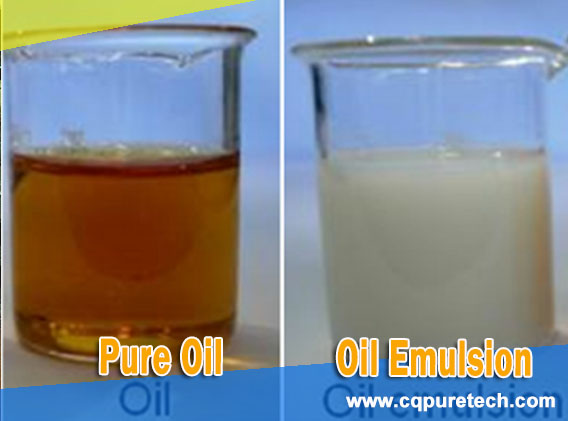
There are three main forms of water exists in lubricant oil:
(1) Free water (or sediment water). Moisture dissipates in oil in the form of water droplets or settles on the bottom of equipment and containers. Although it usually does not affect the breakdown voltage of the insulating oil, it is not allowed because it indicates that the oil has dissolved water in the oil. The water that settles on the bottom of the equipment and container can be released or disposed of directly, which is not harmful.
(2) Dissolve water. The presence of dissolved water (water-in-oil, oil-in-water) can easily cause the emulsified water of the oil to dissolve in the oil in extremely fine particles, usually infiltrating into the oil from the air, which indicates that the oil has been contaminated. Oil oxidation also generates a small amount of water, and dissolved water can drastically reduce the breakdown voltage of the transformer oil. When a high temperature occurs between the coil and the iron core of the transformer, the dissolved water will change to a steam state, and when the water contacts the cold oil, the dissolved water will form again. If you want to go out and dissolve the water completely, you can use a high vacuum atomization method to remove it at a certain temperature, which is often called "vacuum" oil filter.
(3) Emulsified water. Refers to a mixture of oil and ultra-fine water droplets (atomized water droplets). The oil is an emulsion. No matter it is heated, filtered or clarified, such water droplets cannot be separated from the oil. Only under certain conditions, the addition of a suitable demulsifier can separate oil and water. Emulsified water is the most harmful to oil.
Lubricating oil emulsification generally refers to the following reasons:
1. The moisture in the air condenses in the mailbox due to the alternating heat and cold, and turns into water droplets and falls into the oil.
2. Due to inadequate sealing of welds, flanges, etc., rainwater on the oil tank seeps into the oil tank.
3. Due to the damage of the pumping hydraulic cylinder, the water is brought into the oil by the piston rod.
4. Moisture is brought into the process of cleaning, oil change and maintenance.
Troubleshooting:
(1) Drain in a timely manner, it is recommended to open the water valve to discharge water before each work.
(2) Try to avoid changing oil on rainy days. If changing oil on rainy days, measures should be taken to prevent rainwater from entering the oil tank.
(3) Waterproof measures should be taken during rainy maintenance. When conditions permit, when the oil temperature is too high, water can be poured on the sealed chamber of the pumping hydraulic cylinder and the cooler to reduce the oil temperature and prevent the generation of high-temperature oxides.
It is not terrible to find that the water in the oil or the emulsification of the lubricating oil is actually terrible. We must immediately avoid the coexistence of water and mechanical impurities with the oil for a long time, so that it is easy to accelerate the oxidation of the oil and increase its pollution. In fact, lubricating oil with emulsification or serious water inflow can be timely demulsified, dehydrated and filtered by PureTech DVOP Transformer Oil Purifier, TOP Turbine Oil Purifier, LOP Lubricating Oil Purifier, if plus the effect of coalescing vacuum dehydration oil filter machine is more thorough and efficient than traditional one. After purification, the oil can be comprehensively tested for moisture value, mechanical impurity content, and viscosity value. Generally, these values are up to standard, and the oil can be recycled repeatedly.
Name: PURETECH
Mobile:+86 17815389416
Tel:+86 17815389416
Whatsapp:+8617815389416
Email:sales@cqpuretech.com
Add:1 Xinmao Road, Beibei district, Chongqing, China